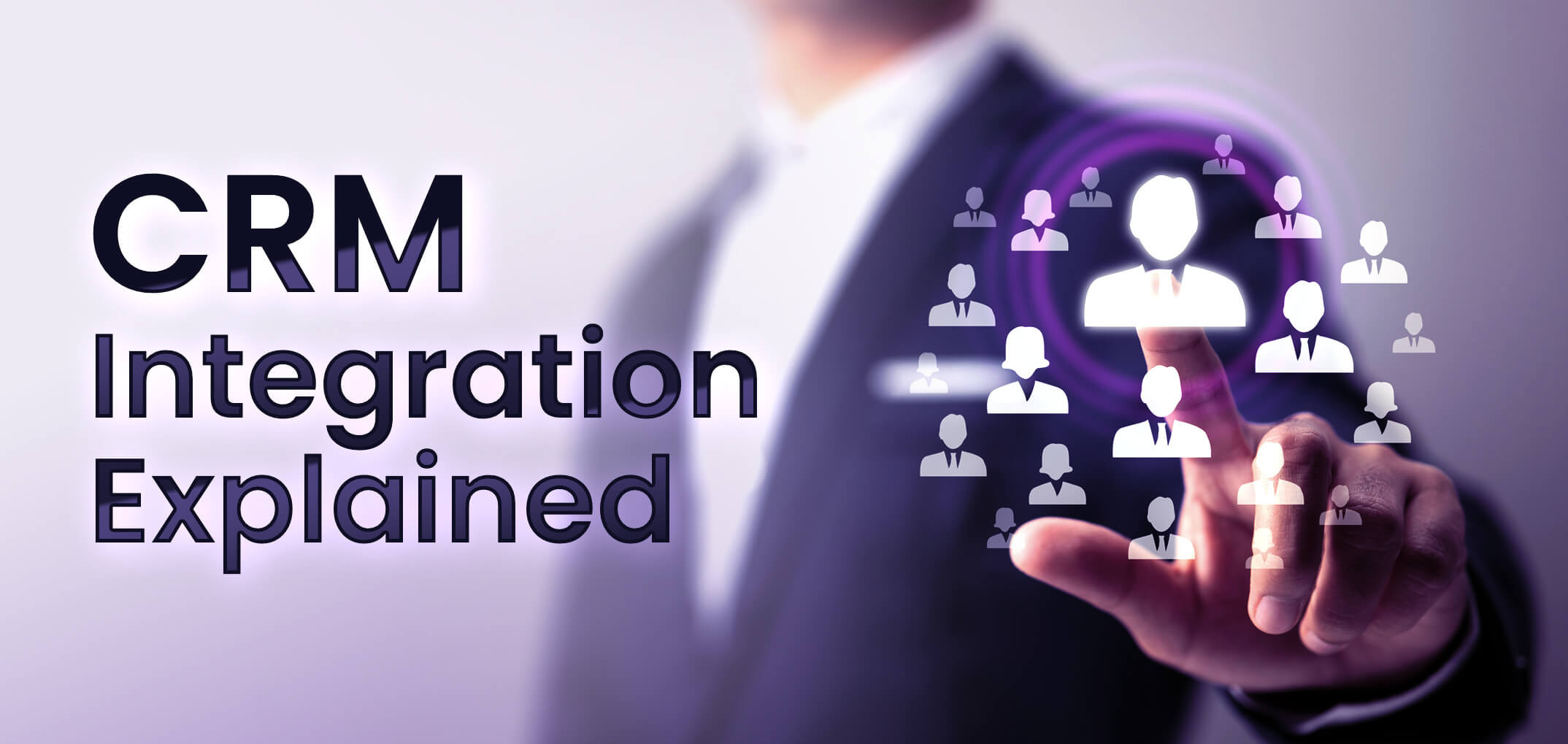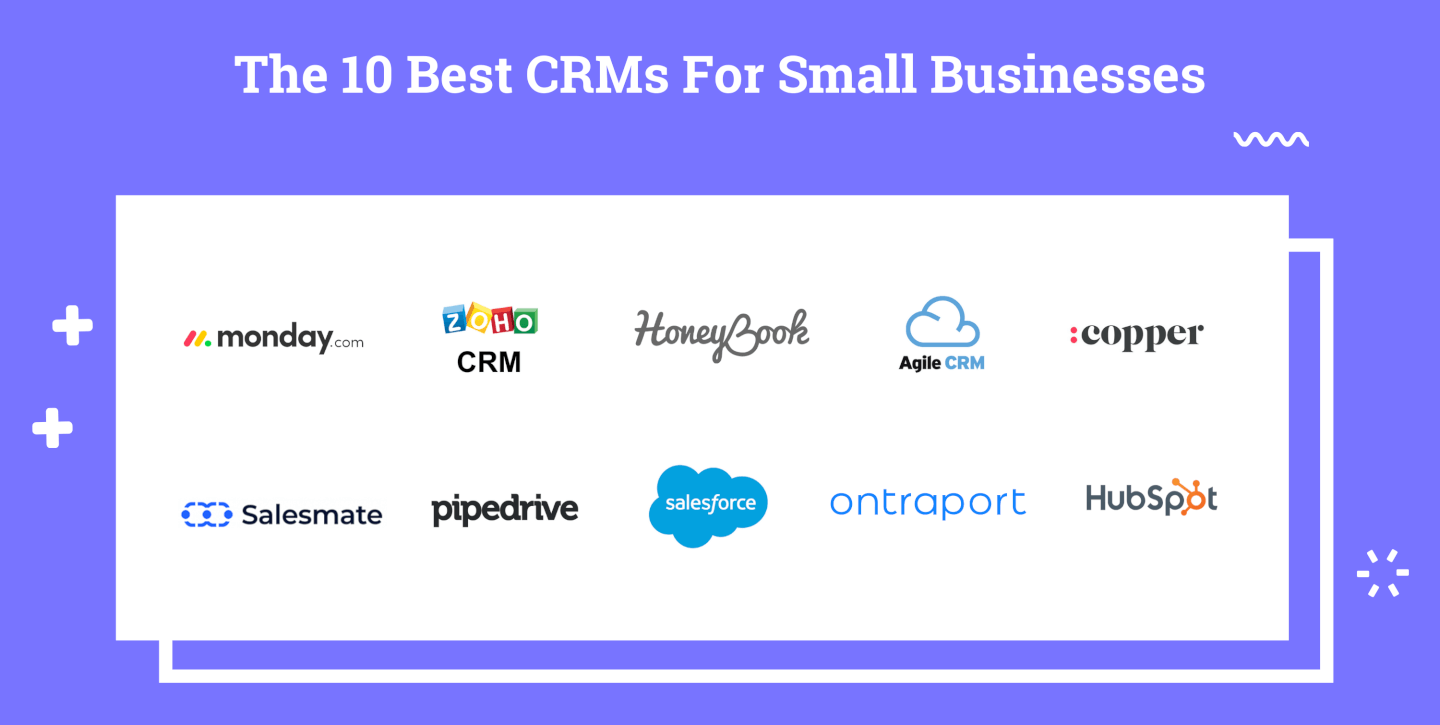
Unlocking Synergy: The Power of CRM Integration with Microsoft Teams
In today’s fast-paced business environment, the ability to seamlessly connect disparate systems is no longer a luxury, but a necessity. Companies are constantly seeking ways to streamline workflows, improve communication, and boost overall productivity. One of the most effective strategies for achieving these goals is through the integration of Customer Relationship Management (CRM) systems with collaboration platforms like Microsoft Teams. This article delves deep into the benefits, functionalities, and best practices of CRM integration with Microsoft Teams, providing a comprehensive guide for businesses looking to optimize their operations and elevate customer experiences.
Understanding the Core Concepts: CRM and Microsoft Teams
What is CRM?
Customer Relationship Management (CRM) is a technology that helps businesses manage and analyze customer interactions and data throughout the customer lifecycle. CRM systems are designed to improve business relationships with customers, assist in customer retention, and drive sales growth. They typically store information about customers, track interactions, automate marketing campaigns, and provide insights into customer behavior. Popular CRM platforms include Salesforce, HubSpot, Zoho CRM, and Microsoft Dynamics 365.
What is Microsoft Teams?
Microsoft Teams is a unified communication and collaboration platform that combines chat, video meetings, file storage, and application integration. It’s part of the Microsoft 365 suite and has become a central hub for teamwork in many organizations. Teams allows users to communicate in real-time, share files, schedule meetings, and collaborate on projects from anywhere, anytime. It offers a rich ecosystem of integrations with other applications, making it a versatile tool for various business functions.
The Benefits of CRM Integration with Microsoft Teams
Integrating CRM with Microsoft Teams offers a multitude of advantages, transforming the way businesses operate and interact with their customers. Here are some key benefits:
Enhanced Communication and Collaboration
One of the primary benefits is the ability to centralize communication and collaboration. Instead of switching between multiple applications, teams can access CRM data and interact with customers directly within Teams. This streamlines workflows, reduces the risk of miscommunication, and promotes a more collaborative environment. Imagine a sales representative being able to view a customer’s profile, previous interactions, and ongoing deals directly within a Teams chat. This level of accessibility fosters better decision-making and quicker response times.
Improved Sales Productivity
CRM integration empowers sales teams by providing them with the tools and information they need to close deals more efficiently. Sales representatives can access customer data, track opportunities, and update deal statuses without leaving Teams. This eliminates the need to manually enter data into multiple systems, saving time and reducing the potential for errors. Furthermore, they can easily share customer insights and collaborate with colleagues on sales strategies, leading to more effective sales processes and higher conversion rates. For example, a sales team could create a dedicated Teams channel for a specific client, allowing them to centralize all communication, files, and CRM data related to that client.
Better Customer Service
Integrating CRM with Teams allows customer service representatives to provide faster and more personalized support. They can quickly access customer information, view past interactions, and address customer inquiries in real-time. This leads to improved customer satisfaction and loyalty. When a customer contacts support, the representative can instantly pull up their history, understand their needs, and offer tailored solutions. This not only resolves issues more quickly but also demonstrates a commitment to providing excellent customer service.
Increased Data Accessibility and Accuracy
Integration ensures that CRM data is readily available to all relevant team members within Teams. This reduces the likelihood of data silos and ensures that everyone is working with the same information. Data synchronization between the two systems minimizes the risk of errors and inconsistencies. When data is updated in one system, it’s automatically reflected in the other, providing a single source of truth for customer information. This improved data accuracy leads to better decision-making and more effective business strategies.
Streamlined Workflows and Automation
CRM integration with Teams facilitates the automation of various tasks and workflows. For example, sales leads can be automatically created in the CRM system when a new inquiry is received through Teams. Automated notifications can alert team members about important customer interactions or deal updates. This automation frees up valuable time for employees to focus on more strategic activities, such as building relationships and closing deals.
Enhanced Reporting and Analytics
By integrating CRM with Teams, businesses can gain deeper insights into their customer interactions and sales performance. Data from both systems can be combined to generate comprehensive reports and analytics. This information can be used to identify trends, measure the effectiveness of sales and marketing campaigns, and make data-driven decisions to improve business outcomes. For instance, a company could track the number of customer interactions conducted through Teams and correlate them with sales conversion rates to optimize their communication strategies.
Key Features of CRM Integration with Microsoft Teams
The specific features available in CRM integration with Microsoft Teams vary depending on the CRM platform and integration method used. However, some common features include:
Contact and Account Management
Accessing and managing customer contacts and accounts directly within Teams. Users can view contact details, account information, and related activities without switching applications.
Real-time Notifications
Receiving real-time notifications about important CRM events, such as new leads, deal updates, and customer interactions. These notifications keep team members informed and allow them to respond promptly.
Activity Tracking
Tracking customer interactions, such as calls, emails, and meetings, within the CRM system. This provides a complete record of customer engagement and helps teams understand customer behavior.
Meeting Integration
Scheduling and conducting meetings directly from Teams, with meeting details automatically logged in the CRM system. This streamlines meeting management and ensures that all relevant information is captured.
File Sharing and Collaboration
Sharing files and collaborating on documents related to customer accounts within Teams. This promotes teamwork and ensures that everyone has access to the latest information.
Customizable Dashboards
Creating custom dashboards within Teams to display key CRM data and metrics. This allows users to monitor their performance and track progress towards their goals.
Task Management
Creating and assigning tasks related to customer accounts within Teams. This helps teams stay organized and ensures that all necessary actions are taken.
Implementing CRM Integration with Microsoft Teams: A Step-by-Step Guide
Integrating CRM with Microsoft Teams can be a straightforward process, but it’s important to plan and execute the integration carefully. Here’s a step-by-step guide:
1. Define Your Goals and Requirements
Before you begin, clearly define your goals for the integration. What do you hope to achieve by connecting your CRM and Teams? Identify the specific features and functionalities you need. Consider the needs of your different teams and departments. Understanding your requirements will help you choose the right integration method and ensure that the integration meets your business needs.
2. Choose the Right Integration Method
There are several ways to integrate CRM with Microsoft Teams. The best method for your business will depend on your CRM platform, your technical expertise, and your budget. Some common methods include:
- Native Integrations: Many CRM platforms, such as Microsoft Dynamics 365, offer native integrations with Microsoft Teams. These integrations are typically easy to set up and provide a seamless user experience.
- Third-Party Integrations: Several third-party vendors offer integration solutions that connect CRM systems with Microsoft Teams. These solutions may offer more advanced features and customization options.
- API Integrations: For more complex integrations, you can use the CRM and Teams APIs to build a custom integration. This approach offers the greatest flexibility but requires more technical expertise.
3. Select a CRM Integration Solution
If you’re using a popular CRM like Salesforce or HubSpot, you’ll likely find several pre-built integration options in the Microsoft Teams app store or through the CRM provider. Research and compare different solutions based on features, pricing, and user reviews. Consider factors such as ease of use, security, and customer support.
4. Configure the Integration
Once you’ve chosen an integration solution, follow the instructions provided to configure the integration. This typically involves connecting your CRM and Teams accounts, mapping data fields, and configuring any custom settings. Be sure to test the integration thoroughly to ensure that it’s working correctly.
5. Train Your Team
Provide training to your team members on how to use the integrated system. Explain the new features and functionalities, and provide guidance on how to perform common tasks. This will help ensure that your team members can take full advantage of the integration. Prepare training materials, such as user guides and video tutorials, to support the training process.
6. Monitor and Optimize
After the integration is implemented, monitor its performance and gather feedback from your team members. Identify any issues or areas for improvement. Regularly review your integration settings and make adjustments as needed to optimize its performance. Stay up-to-date on any updates or new features released by your CRM and Teams providers.
Popular CRM Platforms and Their Integration Capabilities with Microsoft Teams
Several popular CRM platforms offer robust integration capabilities with Microsoft Teams. Here’s a look at some of them:
Microsoft Dynamics 365
As a Microsoft product, Dynamics 365 offers seamless integration with Microsoft Teams. Users can access and manage customer data, collaborate on sales opportunities, and conduct meetings directly within Teams. The native integration provides a smooth user experience and simplifies workflows.
Salesforce
Salesforce offers a robust integration with Microsoft Teams through its Salesforce for Microsoft Teams app. Users can access Salesforce data, collaborate on deals, and receive real-time notifications within Teams. The integration supports features such as contact and account management, activity tracking, and meeting integration.
HubSpot
HubSpot provides a direct integration with Microsoft Teams, allowing users to access HubSpot data, collaborate on deals, and track customer interactions within Teams. The integration offers features such as contact and company information, deal tracking, and meeting scheduling.
Zoho CRM
Zoho CRM offers an integration with Microsoft Teams through its Zoho CRM for Microsoft Teams app. Users can access and manage customer data, collaborate on sales opportunities, and receive notifications within Teams. The integration supports features such as contact management, lead tracking, and task management.
Pipedrive
Pipedrive offers an integration with Microsoft Teams that enables users to share deals, collaborate on tasks, and access contact information directly within Teams. The integration focuses on streamlining sales processes and improving team communication.
Best Practices for a Successful CRM Integration with Microsoft Teams
To maximize the benefits of CRM integration with Microsoft Teams, consider these best practices:
Plan and Define Your Goals
Before you begin the integration process, take the time to define your goals and requirements. What do you want to achieve by integrating your CRM and Teams? Knowing your goals will help you choose the right integration method and ensure that the integration meets your business needs.
Choose the Right Integration Method
Select the integration method that best suits your needs. Consider factors such as your CRM platform, your technical expertise, and your budget. Native integrations are often the easiest to set up, while API integrations offer the greatest flexibility. Evaluate the features and functionalities of different integration options.
Involve Key Stakeholders
Involve key stakeholders from all relevant departments in the integration process. This will help ensure that the integration meets the needs of everyone who will be using it. Gather feedback from sales, marketing, customer service, and IT teams. Consider their input when making decisions about the integration.
Provide Adequate Training
Provide comprehensive training to your team members on how to use the integrated system. Explain the new features and functionalities, and provide guidance on how to perform common tasks. Offer ongoing support and resources to help users adopt the new system. Create user guides, video tutorials, and other training materials.
Test Thoroughly
Test the integration thoroughly before deploying it to your entire team. This will help you identify any issues or bugs and ensure that the integration is working correctly. Test the different features and functionalities, such as contact management, activity tracking, and meeting integration. Conduct user acceptance testing with a small group of users before launching the integration company-wide.
Monitor and Optimize
After the integration is implemented, monitor its performance and gather feedback from your team members. Identify any issues or areas for improvement. Regularly review your integration settings and make adjustments as needed to optimize its performance. Track key metrics, such as sales productivity and customer satisfaction, to measure the impact of the integration.
Ensure Data Security
Prioritize data security throughout the integration process. Implement appropriate security measures to protect customer data from unauthorized access. Use secure connections and encryption to protect data in transit. Follow industry best practices for data security and compliance.
Start Small and Scale Up
If you’re new to CRM integration, consider starting with a pilot project or a small group of users. This will allow you to test the integration and identify any issues before rolling it out to your entire team. Once you’ve gained experience and confidence, you can scale up the integration to include more users and features.
Communicate Effectively
Communicate clearly and frequently with your team members throughout the integration process. Keep them informed about the progress of the integration, any changes, and any new features. Provide regular updates and address any questions or concerns they may have. Use multiple communication channels, such as email, Teams channels, and company-wide announcements.
Troubleshooting Common Issues
While CRM integration with Microsoft Teams offers many benefits, you may encounter some issues during the implementation or ongoing use of the integration. Here are some common problems and how to resolve them:
Data Synchronization Issues
One common issue is data synchronization problems, where data doesn’t update correctly between the CRM and Teams. This can be caused by configuration errors, network issues, or platform limitations. To troubleshoot, verify the integration settings, check your internet connection, and ensure that both systems are running properly. Review the data mapping and settings to ensure that the fields are correctly synchronized. If the problem persists, contact your CRM or Teams provider for support.
User Access and Permissions Problems
Ensuring that users have the correct access and permissions within both the CRM and Teams is crucial. If users can’t access the necessary data or features, it can hinder productivity. Check the user roles and permissions in both systems to ensure that users have the appropriate access. Verify that users are properly authenticated and authorized. Review any group memberships or security settings that may be restricting access.
Performance Issues
Performance issues, such as slow loading times or delays, can occur if the integration is not optimized or if there are network bottlenecks. Identify the source of the slowdown by testing the integration from different locations and devices. Optimize the integration settings, such as the frequency of data synchronization. Consider upgrading your network infrastructure or increasing the resources allocated to your CRM or Teams instance if needed.
Integration Conflicts
If you’re using multiple integrations or custom code, conflicts can occur. These conflicts may cause unexpected behavior or errors. Review the configuration of your integrations to identify any conflicts. Ensure that the integrations are compatible with each other. If necessary, disable or modify conflicting integrations. Consult the documentation for each integration and seek support from the vendors.
Limited Functionality
The integration may not provide all the features you need. Limitations can arise due to the capabilities of the CRM and Teams platforms or the specific integration solution. Review the features offered by the integration solution. If the integration does not meet your needs, consider alternative solutions or custom development to add the missing features. Evaluate your requirements and compare the available options before making a decision.
The Future of CRM and Microsoft Teams Integration
The integration of CRM with Microsoft Teams is an evolving landscape, with new features and capabilities constantly emerging. As businesses increasingly rely on these platforms, we can expect to see even more seamless and powerful integrations in the future. Here are some trends to watch:
AI-Powered Integrations
Artificial intelligence (AI) is poised to play a significant role in the future of CRM and Teams integration. AI-powered features can automate tasks, provide insights, and personalize customer interactions. Expect to see more AI-driven chatbots, predictive analytics, and personalized recommendations within the integrated environment.
Enhanced Mobile Experience
With the growing use of mobile devices, the mobile experience will become increasingly important. Future integrations will likely offer enhanced mobile access to CRM data and Teams features, allowing users to stay productive on the go. Expect to see more mobile-optimized dashboards, notifications, and collaboration tools.
Deeper Integrations with Other Applications
Businesses use a variety of applications to manage their operations. Future integrations will likely extend beyond CRM and Teams to include other applications, such as marketing automation platforms, project management tools, and e-commerce platforms. This will create a more connected and streamlined work environment.
Focus on Data Privacy and Security
Data privacy and security will remain a top priority. Future integrations will need to comply with evolving data privacy regulations and offer robust security features to protect customer data. Expect to see more advanced security measures, such as multi-factor authentication and data encryption, in integrated solutions.
Increased Customization Options
Businesses have unique needs, and future integrations will offer more customization options. Expect to see more flexible and adaptable solutions that can be tailored to specific business requirements. This includes the ability to customize dashboards, workflows, and notifications.
Conclusion: Embrace the Synergy
CRM integration with Microsoft Teams is a powerful strategy for businesses seeking to enhance communication, boost productivity, and improve customer experiences. By seamlessly connecting CRM data and Teams collaboration tools, organizations can streamline workflows, empower sales teams, and provide exceptional customer service. This integration empowers teams to work more efficiently, make data-driven decisions, and build stronger customer relationships. By embracing these integrations, businesses can unlock new levels of efficiency, collaboration, and success. The future of work is collaborative, and CRM integration with Microsoft Teams is a key component of that future.

